In A Midsummer Night’s Dream, Nick Bottom finds his head transformed into that of a donkey, courtesy of the mischievous fairy, Puck. The donkey head is among Shakespeare’s most distinctive props, and has been on my bucket list of famous props to build. Recently, Triad Stage mounted a production.
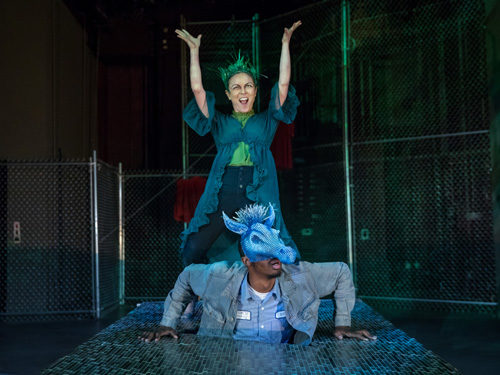
The mask was designed by our costume designer, Hannah Chalman. She designed masks for all the fairies as well, so we split the fabrication of the masks between the props and costume departments.
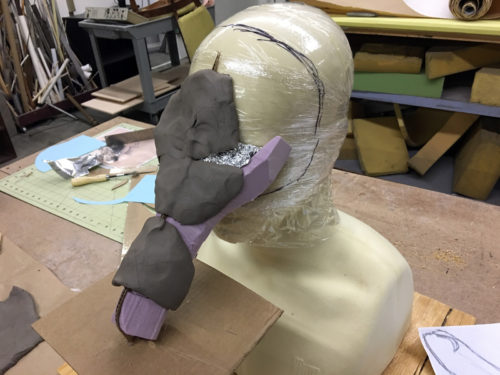
The construction methods and materials were worked out between Hannah and Jen Stanley, our costume shop manager. The forms would be sculpted in clay and the masks themselves would have a base of Varaform (more on that in a bit).
I began with a head form and attached some cardboard, foam, and aluminum foil to it to establish the basic shape and proportions of the mask. I proceeded to lay clay on top of that.

This was my first time working with WED Clay (EM-217). This clay was developed by Walter E. Disney, hence the name. It is a water-based clay, so it starts out super smooth and easy to sculpt, and dries over time so you can carve and cut more precise and sharp details later on.
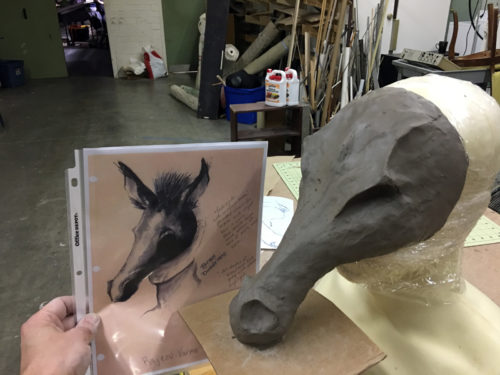
I had a good design rendering to work from, and I checked my sculpt against it often. It is also important to regularly check your sculpture from all angles for symmetry and proportion.

The sculpting portion was done over a few days, so I would wrap the clay in plastic to keep it from drying out too quickly. This type of clay is formulated to dry slowly. Unlike oil-based clays, when it dries, it is no longer reusable. However, the forming process with the plastic we were using involves a lot of heat, which could soften and deform an oil-based clay.

After the shape of the mask was satisfactory, I wrapped it in aluminum foil so the plastic would not adhere to the clay.

Varaform is a low-melting thermoplastic similar to Wonderflex and Worbla. It is an open net rather than a solid sheet. This makes it easier to drape around complex curves, and keeps the weight down when using it under fabrics to create sculpted costume pieces. In our case, the open netting was integral to the appearance of the masks themselves.
Like other low-melt thermoplastics, you can shape it with a hot air gun or steamer. I decided to boil a big pot of water and dip the whole sheet in, then wrap it around the whole form at once. I went back in with a hot air gun to further shape any areas that needed refinement.
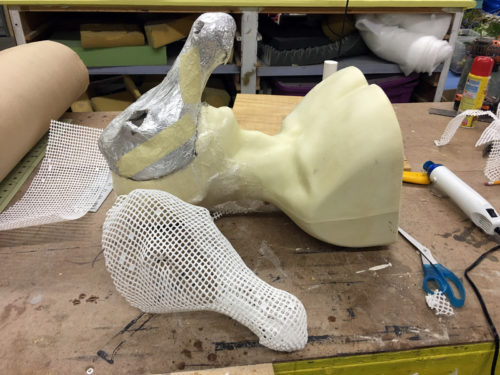
Once the mask hardened, I removed it from the form and trimmed the edges. I needed to cut a slit in the bottom of the snout to pull it off, but the Varaform adheres to itself when hot, so it was easy to close it back up again.
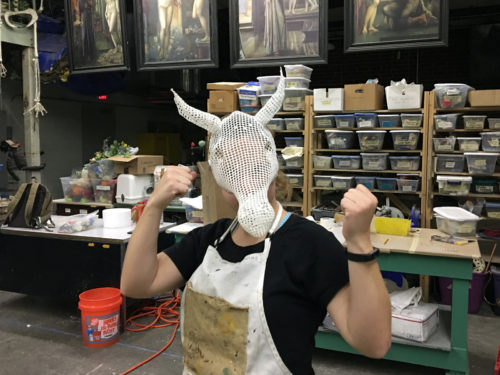
I shaped the ears separately on a quick form I made from cardboard and tape. He also got some small eyelids. After attaching these, I sewed an elastic band in the back and had my apprentice try it on. The Varaform makes it easy for the actor to see through the mask while wearing it, and also keeps it light and breathable.
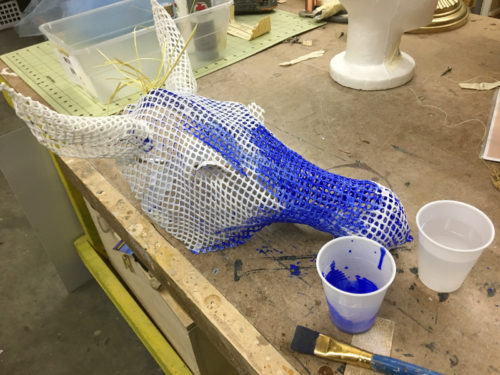
With the shape finished, I began the long process of adding a straw mane. We were using plastic straw on all the masks. I tied individual pieces to the Varaform, similar to how you make a latch hook rug. He also got some small tufts of straw in his ears. I painted the whole thing.

These masks were introduced into rehearsal in the first couple of days so the actors would get used to them. We took the masks back to the shop on the days they were not using them so we could continue working on them.
Once the mask got on stage under the lights, we realized he needed modifications to his paint job. I was busy with other notes, so the final paint treatment you see above was actually done by Hannah.






Damn man that is pretty kick ass!! Did you have to heat the plastic straws to get them to stand up or did they do that on their own?
Yeah, they stood up on their own. They did not like heat. I first tried to hot glue them to the mask, but the heat of the hot glue actually melted the straw.
So cool!